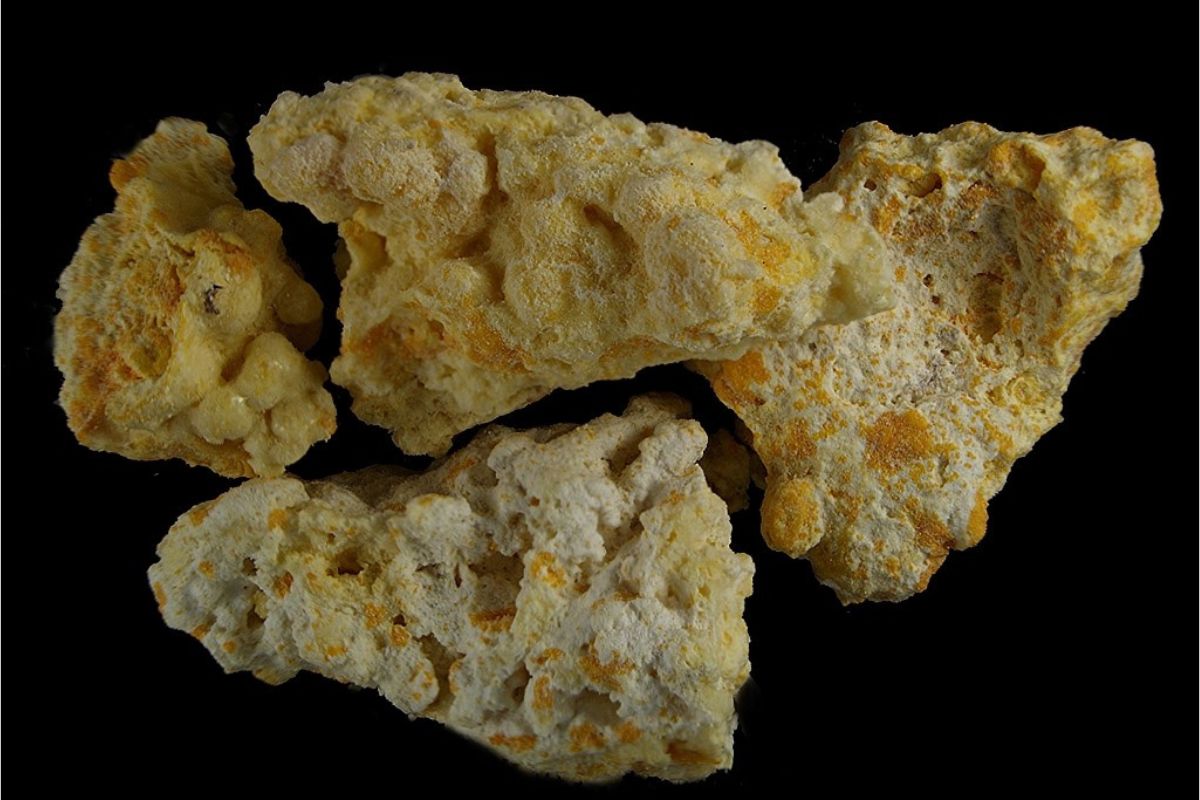
Avogadrite might sound like a term straight out of a chemistry textbook, but there's more to it than meets the eye. Named after the famous scientist Amedeo Avogadro, this mineral holds a unique place in the world of science. Found primarily in volcanic fumaroles, Avogadrite is a rare potassium and cesium borate mineral. Its striking greenish-yellow color and crystal structure make it a subject of fascination for geologists and mineral enthusiasts alike. But what makes Avogadrite truly special? Its rarity and unique formation process. Dive into these 30 intriguing facts about Avogadrite to uncover the secrets behind this captivating mineral.
Key Takeaways:
- Avogadrite is a rare mineral named after scientist Amedeo Avogadro. It has a hexagonal crystal system, is transparent to translucent, and can be found in volcanic fumaroles.
- Avogadrite has uses in chemical research, metallurgy, and potential applications in nuclear reactors. It is found in Italy, Japan, and Russia, and is a valuable addition to mineral collections.
What is Avogadrite?
Avogadrite is a rare mineral that many people might not have heard of. Named after the famous scientist Amedeo Avogadro, it has some fascinating properties and history. Let's dive into some intriguing facts about this unique mineral.
-
Avogadrite is a potassium fluoborate mineral, which means it contains potassium, fluorine, and boron.
-
It was first discovered in Italy in the early 20th century.
-
The mineral is named after Amedeo Avogadro, the scientist known for Avogadro's law in chemistry.
-
Avogadrite typically forms in volcanic fumaroles, which are openings in the Earth's crust that emit steam and gases.
-
It has a hexagonal crystal system, meaning its crystals are shaped like hexagons.
Physical Properties of Avogadrite
Understanding the physical properties of Avogadrite can help us appreciate its uniqueness. Here are some key characteristics.
-
Avogadrite has a hardness of 3 on the Mohs scale, making it relatively soft.
-
Its color ranges from colorless to white, sometimes with a hint of yellow.
-
The mineral has a vitreous luster, giving it a glass-like appearance.
-
Avogadrite is transparent to translucent, allowing light to pass through it to varying degrees.
-
It has a specific gravity of 2.5, which is a measure of its density.
Chemical Composition of Avogadrite
The chemical makeup of Avogadrite is what gives it its unique properties. Let's explore its composition.
-
Avogadrite's chemical formula is KBF4, indicating it contains potassium (K), boron (B), and fluorine (F).
-
The mineral is part of the fluoborate group, which includes other minerals with similar chemical structures.
-
Avogadrite can sometimes contain trace amounts of other elements, such as sodium.
-
It is soluble in water, meaning it can dissolve when exposed to moisture.
-
The mineral is often found in association with other minerals, such as sassolite and fluorite.
Uses and Applications of Avogadrite
While Avogadrite is not widely used, it has some interesting applications in various fields.
-
Avogadrite is sometimes used in chemical research due to its unique properties.
-
It can be used as a flux in metallurgy, helping to purify metals during smelting.
-
The mineral is also studied for its potential use in nuclear reactors due to its boron content.
-
Avogadrite's fluorine content makes it useful in the production of certain chemicals.
-
It is sometimes collected by mineral enthusiasts due to its rarity and unique properties.
Where to Find Avogadrite
Avogadrite is not commonly found, but there are a few locations where it can be sourced.
-
The mineral was first discovered in Mount Vesuvius, Italy.
-
It has also been found in volcanic regions in Japan.
-
Some deposits have been located in Russia, particularly in the Kamchatka Peninsula.
-
Avogadrite can be found in fumarole deposits, where volcanic gases condense and form minerals.
-
It is often found in small quantities, making it a rare and valuable find for collectors.
Interesting Facts about Avogadrite
Here are some additional fun and lesser-known facts about this fascinating mineral.
-
Avogadrite is named in honor of Amedeo Avogadro, who is best known for Avogadro's number in chemistry.
-
The mineral's name was officially approved by the International Mineralogical Association in 1926.
-
Avogadrite is often studied by geologists and mineralogists to understand volcanic processes.
-
The mineral's unique properties make it a subject of interest in academic research.
-
Avogadrite's rarity and unique characteristics make it a valuable addition to any mineral collection.
The Final Word on Avogadrite
Avogadrite, a rare and fascinating mineral, holds a unique place in the world of chemistry and geology. Its discovery, properties, and applications make it a subject worth exploring. From its chemical composition to its uses in various industries, avogadrite offers a glimpse into the intricate workings of our natural world.
Understanding avogadrite not only enriches our knowledge of minerals but also highlights the importance of scientific discovery. Whether you're a student, a professional, or just someone curious about the world around you, learning about avogadrite can be both educational and inspiring.
So, next time you come across a reference to avogadrite, you'll know a bit more about this intriguing mineral. Keep exploring, stay curious, and who knows what other fascinating facts you'll uncover in your journey of learning.
Frequently Asked Questions
Was this page helpful?
Our commitment to delivering trustworthy and engaging content is at the heart of what we do. Each fact on our site is contributed by real users like you, bringing a wealth of diverse insights and information. To ensure the highest standards of accuracy and reliability, our dedicated editors meticulously review each submission. This process guarantees that the facts we share are not only fascinating but also credible. Trust in our commitment to quality and authenticity as you explore and learn with us.


